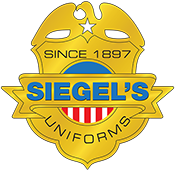The key to looking polished and professional, especially in the Class A and Dress Uniforms, lies in two important factors: cleanliness and fit. The importance of a clean uniform speaks for itself, but proper fit is sometimes underrated and overlooked. A properly fitted Class A or dress uniform is crucial while performing tasks that require plasticity and functionality. It is always a good idea to be re-measured to ensure a proper fit. Some people forget to consider function with fit. However, in order to get a proper fit to your uniform, you must often take new measurements and will sometimes need to increase your “normal” size to accommodate personal activity levels. For example, one should purchase a coat that is two sizes larger when planning to perform active physical training regiments that require the wearer to broaden their shoulders, chest and/or back. For uniforms that will be used in marching, it is suggested by fitting experts to increase your measured size by one full size.
Most of the time, people assume they know their current sizes. Unfortunately, small gains or losses in weight can dramatically change how a fitted uniform appears. It is important in a fitted dress uniform to adjust, as needed, to these subtle changes. Measuring yourself once a year and making needed adjustments will ensure the wearer will look at sharp as the situation demands. For best results, measure the body wearing only undergarments, hold the tape measure close but not tight and use accurate information to determine the correct uniform size.
Key Measurements, Dress Uniforms
Hat size
Measuring for a hat has as much to do with style as the size of your head. Service Caps, Dress Hats, and Berets require consideration of fit when ordering, and may be different sizes. Measure in the middle of the forehead above the eye brow line, take the largest circumference.
Collar
Measure around your neck at the point where the collar is worn, pulling the tape tight enough to remove gaps between the tape and the skin, but not so tight as to depress and discolor the skin. For comfort, round up to the next ½” for your collar size.
Chest / Bust
Stand relaxed, measure around the largest part of the chest or bust with the tape passing under the arms, remaining congruent to the floor, and snug, not tight.
Waist
While standing relaxed, measure around the waist where the trousers are worn; generally this is the smallest part of the waist. Pull the tape comfortably close.
Hips
While standing relaxed with your feet together, measure around the fullest part of your hips, keeping the tape parallel to the floor and well fitted.
Skirt length
Measure from your waistline to the center of your kneecap.
Inseam – Measure the inside seam from the crotch to the bottom of the trouser leg.
Sleeve out seam
With your arms held relaxed at your sides, measure from the center of the back, over the shoulder, and to the bottom of the wrist bone where the hand joins the wrist.
Dress Uniforms in particular, look better the more fitted they are. The Class A and Law Enforcement Dress Uniform represents officers in ceremonial functions and when properly worn, commands respect from any audience. The Class A uniform is often comprised of many accessories, depending on the particular occasion or Honor Guard and fitting of each of these features is imperative to the overall impressions they make.


